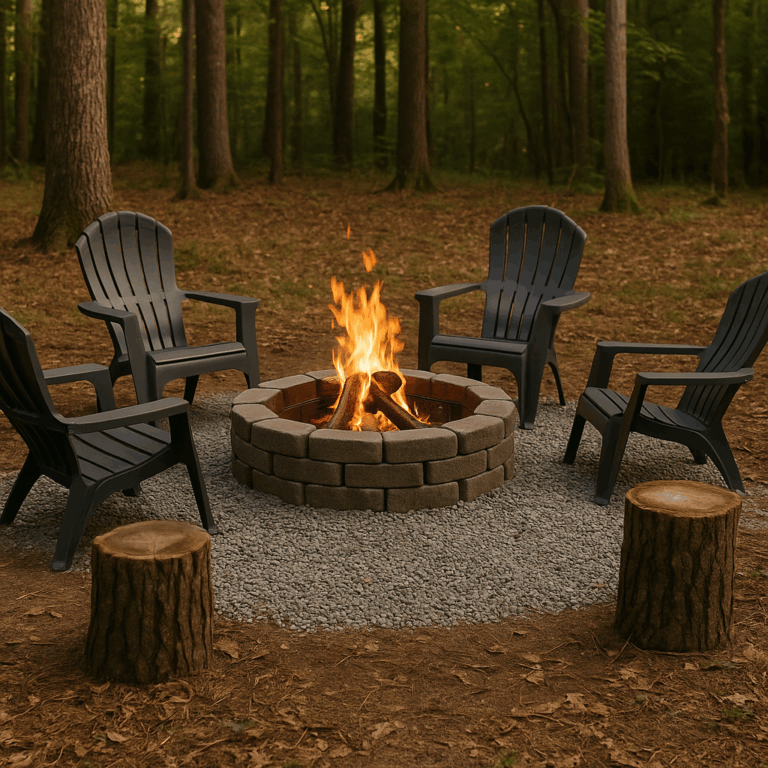How to Plan Your First Cabin Projects Without Burning Out
When we bought our cabin, our heads were filled with ideas: treehouse, sauna, orchard, fire pit, paneling, new lighting, a gym… and that was just the first weekend. But it didn’t take long to realize something important: cabin time isn’t infinite. Between work, parenting, and travel, we only had so many weekends to make this place come to life. And if we weren’t careful, our dream retreat would become just another job.
Start With a Vision, Not a To-Do List
Before you reach for a hammer or fire up Zillow, take a step back. What’s your cabin really for? For us, it wasn’t about productivity—it was about presence. Our vision wasn’t just to fix things or make them prettier. It was to create a space that made us feel grounded, connected, and free.
That shift in mindset changed everything. Instead of writing down everything we “had to do,” we created a “feeling list.” What did we want to feel when we stepped onto the porch? What memories did we want to make with our daughter? That guided every project we chose.
Our Rule of 3: Time, Energy, Impact
Every project we take on has to pass three filters:
- Time: Can we complete it in 3–4 days?
- Energy: Will we still have bandwidth for family time afterward?
- Impact: Does it improve how we feel at the cabin?
This helped us avoid burning out and kept our projects aligned with our actual goals. The fire pit, for example, took one weekend and changed how we gather every night. Worth it. Replacing a fence post that no one noticed? We let that one go (for now).
Divide, Delegate, or Delay
It’s okay to not do everything yourself. We’re big believers in DIY, but when it came to dangerous or time-consuming work (like electrical upgrades or removing stumps), we asked for help. Sometimes we traded time with neighbors, other times we paid local pros. If a project didn’t fit the season or the moment, we just delayed it. The orchard can wait. So can the sauna. The Station will still be here.
Our Cabin Project Tools & Systems
To keep things organized, we use a shared Google Sheet that lists every project, its estimated cost, tools needed, and whether it’s a priority. We also color-code by season—some things are best in the fall, others in summer. Here’s what we use to stay on track:
- Google Sheets: for project tracking
- Trello: for visual planning
- Shared Calendar: to coordinate cabin weekends
- A rolling “on-site” checklist: printed, taped to the fridge
Remember Why You Bought the Cabin
This might sound strange, but one of the most important projects is doing nothing at all. Some mornings, we drink coffee on the porch and watch deer move through the trees. We didn’t build anything. We didn’t check off a task. But we slowed down, we breathed deeper, and we remembered why we bought this place in the first place.
Start small. Go slow. Build from the inside out. That’s the only way we’ve found to create a cabin life worth living.
Tips for Families: Cabin Projects with Kids
Since we have a young daughter, many of our projects are done in bursts between snack time, storytelling, and letting her hammer a scrap piece of wood just for fun. Involving kids in the process adds meaning, but it also requires planning. We always bring an extra kit of materials for her—scrap wood, mini tools, and a set job like “collecting pinecones” or painting with supervision. That way, she feels part of it without slowing everything down.
We also plan breaks into every day. A picnic lunch outside. A quick walk to the ridge. Even ten minutes of tag. These pauses give our daughter space to thrive and help us reset our energy before getting back to the task at hand.
Seasonal Planning: When to Do What
We learned the hard way that some projects just don’t belong to certain seasons. Trying to stain the deck in late fall? Nope. Clearing brush in July heat? Not smart. We’ve started sorting our projects like this:
- Spring: Clearing trails, planting, building beds or fences
- Summer: Water-based work, swimming hole ideas, painting, outdoor kitchen
- Fall: Firewood prep, chimney cleaning, cozy indoor upgrades
- Winter: Planning, budgeting, researching tools and materials
Cabin Time is Different Time
One last thing. If you’re used to life in a city, you’ll need to adjust your rhythm. Deliveries take longer. Tools break and there’s no hardware store five minutes away. Things go sideways and the sun goes down faster than you thought. But that’s part of it. It’s not just about what you build—it’s how you respond when things don’t go according to plan.
We’ve learned to laugh more. To let things go. To pour a drink, start a fire, and say, “We’ll try again tomorrow.” Cabin life is slower, yes—but it’s deeper too. And that shift starts not with your tools, but with your mindset.
]]>

